class: center, middle, inverse, title-slide # Week 11 - Probability ## Large Sample Theorems <html> <div style="float:left"> </div> <hr color='#EB811B' size=1px width=800px> </html> ### Danilo Freire ### 10 April 2019 --- <style> .remark-slide-number { position: inherit; } .remark-slide-number .progress-bar-container { position: absolute; bottom: 0; height: 6px; display: block; left: 0; right: 0; } .remark-slide-number .progress-bar { height: 100%; background-color: #EB811B; } .orange { color: #EB811B; } </style> # Today's Agenda .font150[ * Two large sample theorems: * The Law of Large Numbers - Gambler's Fallacy - Infinite Monkey Theorem * The Central Limit Theorem ] --- class: inverse, center, middle # But before that... <html><div style='float:left'></div><hr color='#EB811B' size=1px width=720px></html> --- # News on the Taleb/Silver Debate .center[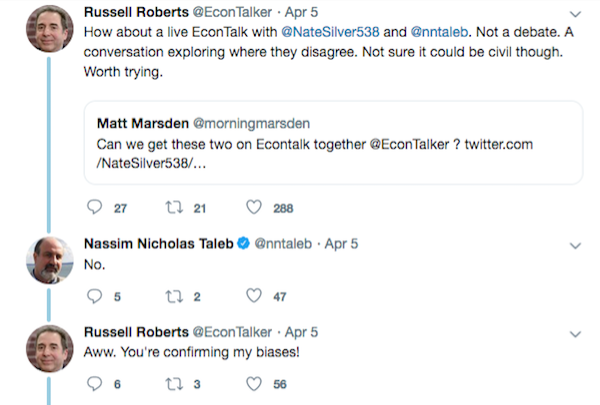] --- # News on the Taleb/Silver Debate .center[] --- # Taleb/Pinker .center[] .font150[ .center[<https://www.vox.com/2015/5/21/8635369/pinker-taleb>] ] --- # Recommended: Fooled by Randomness .center[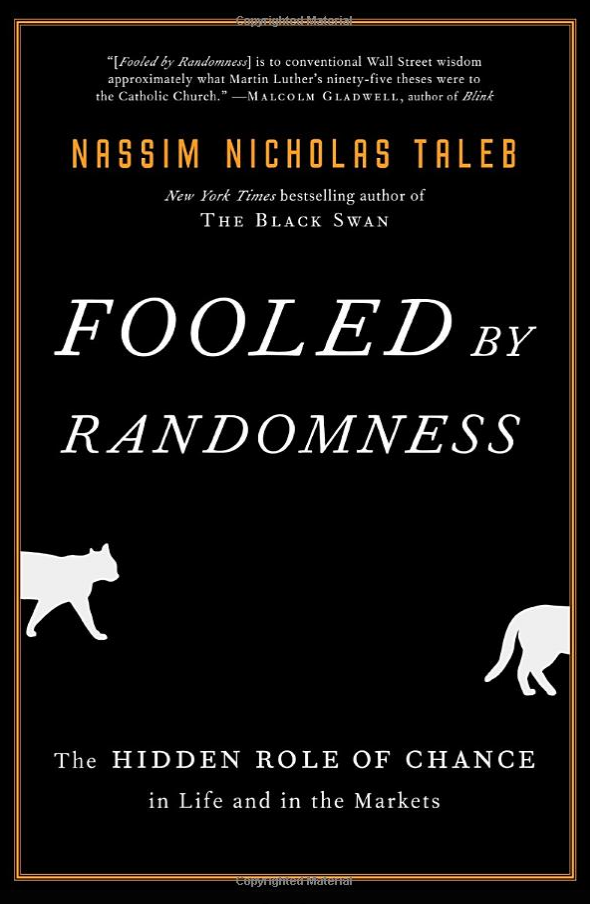] --- # Recommended: Black Swan .center[] --- # Taleb on Pinker .center[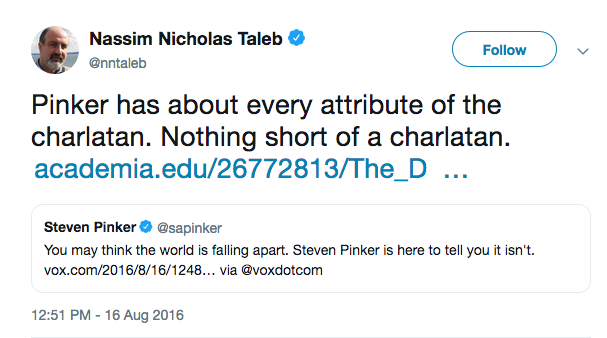] --- # Taleb on Krugman .center[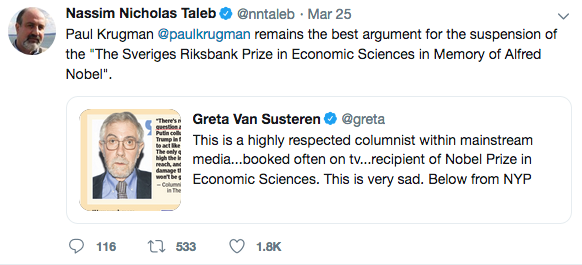] --- # But if you criticise him... .center[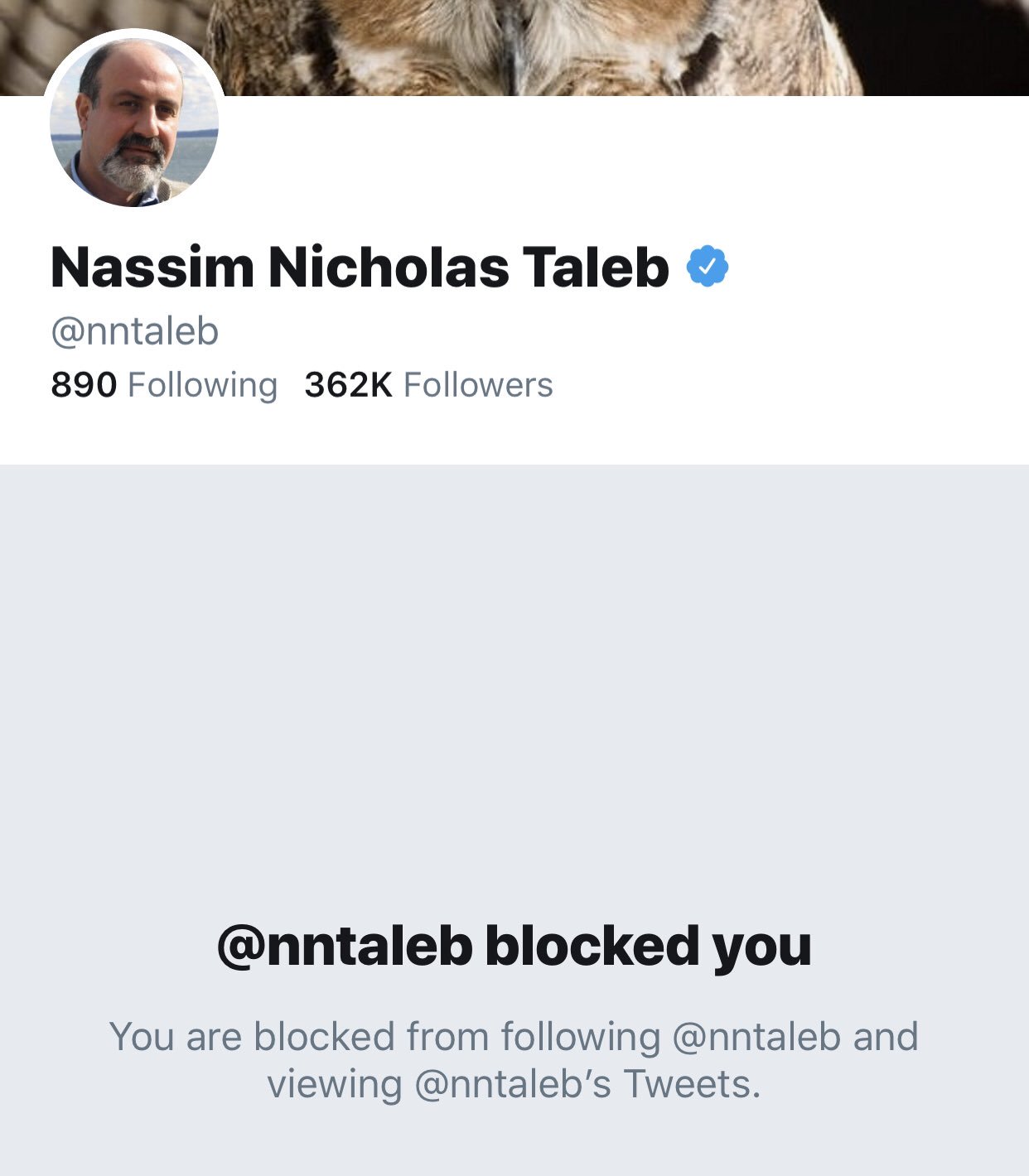] --- # Law of Large Numbers .font130[ * In many probabilistic models, certain patterns emerge as the sample size increases * .orange[Law of Large Numbers:] If we have a sample of i.i.d. observations from random variable `\(X\)` with expectation `\(\mathbb{E}(X)\)`, then `$$\bar{X}_{{n}} = \frac{1}{N} \sum_{i = 1}^{N} X_{i} \rightarrow \mathbb{E}(X)$$`] -- .font130[ * .orange[i.i.d.:] independent and identically distributed random variable. * In English: As the number of draws increases, the sample mean `\(\bar{X}_{{n}}\)` approaches `\(\rightarrow\)` the variable's distribution expectation `\(\mathbb{E}(X)\)` ] --- # Law of Large Numbers .font150[ * Examples - Rolling a die, 500 times - Flipping a coin, also many times - Drawing respondents from a population of supporters and non-supporters for politician A - Statistical simulations ] --- # Simulation: Coin Tossing .font150[ ```r draws <- seq(from = 1, to = 500) # coin tosses avgs <- rep(NA, length(draws)) # empty vector for(i in 1:length(draws)){ samp <- sample(c(0, 1), draws[i], replace = T) avgs[i] <- mean(samp) # sampling w/ replacement } plot(draws, avgs, type = "l", ylim = c(0, 1), main = "Bernoulli with Prob. 0.5") # plot abline(h = 0.5, col = "red", lwd = 2) # expectation ``` ] --- # Simulation: Coin Tossing .font130[ <img src="week11b_files/figure-html/coin02-1.png" style="display: block; margin: auto;" /> ] --- # Simulation: Rolling a Die .font130[ ```r draws <- seq(from = 1, to = 500) # number of draws avgs <- rep(NA, length(draws)) # empty vector for(i in 1:length(draws)){ samp <- sample(c(1:6), draws[i], replace = T) avgs[i] <- mean(samp) # sampling w/ replacement } plot(draws, avgs, type = "l", ylim = c(0, 6), main = "Uniform [1, 6]") # plot abline(h = 3.5, col = "red", lwd = 2) # expectation ``` ] --- # Simulation: Rolling a Die .font150[ <img src="week11b_files/figure-html/die02-1.png" style="display: block; margin: auto;" /> ] --- # Gambler's Fallacy .font150[ * The Law of Large Numbers, as the name implies, is only valid for .orange[large samples] * There is _no principle_ that supports the idea that after a few positive draws a negative draw must appear to "balance" the results * Example: after 10 heads, _another head can come up_. Why? ] -- .font150[ * .orange[Because the events are independent] ] --- # Monte Carlo Casino .center[] .center[<http://www.bbc.com/future/story/20150127-why-we-gamble-like-monkeys>] --- # Jorge Luis Borges .center[] .font150[.center[https://en.wikipedia.org/wiki/Jorge_Luis_Borges]] --- # Infinite Monkey Theorem .center[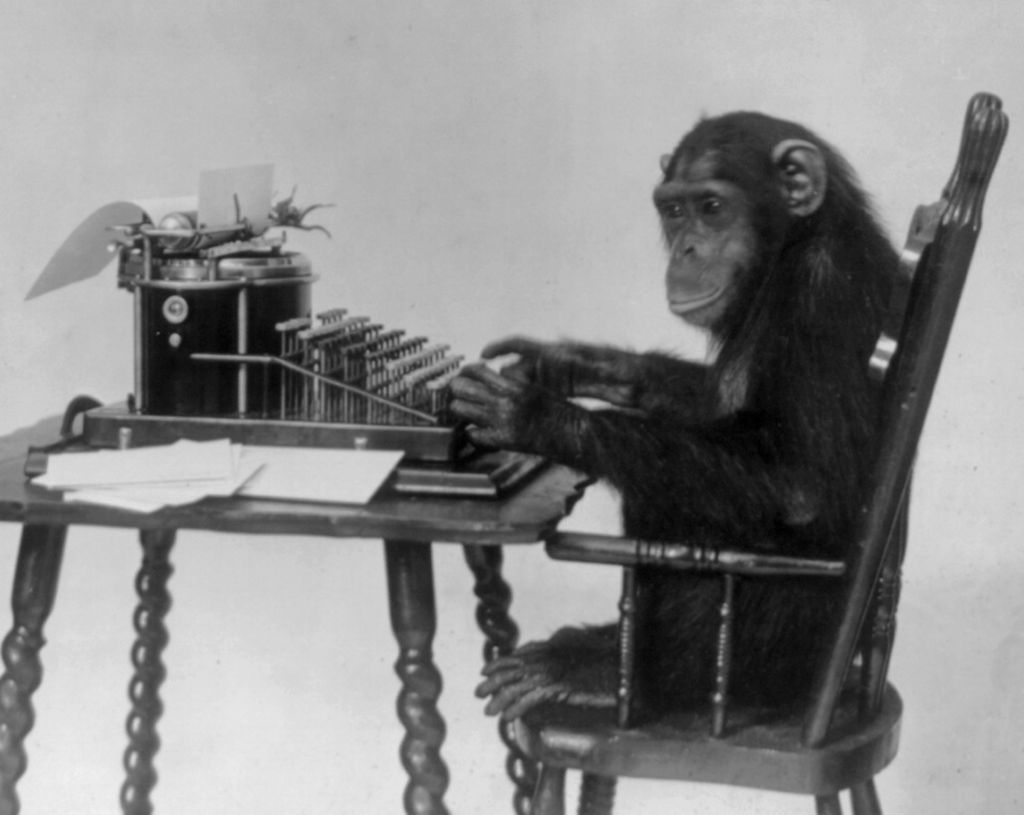] .font150[ * "...a half-dozen monkeys provided with typewriters would, in a few eternities, produce all the books in the British Museum. Strictly speaking, one immortal monkey would suffice." (La Biblioteca Total, 1939) ] --- # The Total Library .font130[ "Everything would be in the Library's blind volumes. Everything: the detailed history of the future, Aeschylus' _The Egyptians_, the exact number of times that the waters of the Ganges have reflected the flight of a falcon, the secret and true nature of Rome, the encyclopedia Novalis would have constructed, my dreams and half-dreams at dawn on August 14, 1934, the proof of Pierre Fermat's theorem, [...] the song the sirens sang, the complete catalog of the Library, the proof of the inaccuracy of that catalog. Everything: but for every sensible line or accurate fact there would be millions of meaningless cacophonies, verbal farragoes, and babblings. Everything: but all the generations of mankind could pass before the dizzying shelves—shelves that obliterate the day and on which chaos lies—ever reward them with a tolerable page." ] --- # The Library of Babel .center[] .font150[ .center[<https://en.wikipedia.org/wiki/The_Library_of_Babel>] ] --- # Central Limit Theorem .font140[ * In practice we observe only the sample mean and _do not know the expectation_ * .orange[The central limit theorem] shows that the distribution of the sample mean approaches the normal distribution as the sample size increases * Again, not the sample itself approaches the normal distribution, .orange[but only the sample means] * Z-score of the sample mean converges in distribution to the standard normal distribution or `\(\mathcal{N}(0,1)\)` as the sample size increases * Interestingly the result is true .orange[for almost any distribution!] ] --- # Central Limit Theorem .font150[ * Experiment: flip a coin 10 times and record the number of heads * Repeat experiment above 1000 times ] --- # Central Limit Theorem .font110[ ```r avgs <- rep(NA, 1000) for(i in 1:1000){ samp <- rbinom(1000, 10, p=0.5) avgs[i] <- mean(samp) } plot(density(avgs)) ``` <img src="week11b_files/figure-html/clt01-1.png" style="display: block; margin: auto;" /> ] --- # Central Limit Theorem .font150[ * Visualisation: <https://seeing-theory.brown.edu/probability-distributions/index.html> ] --- # Central Limit Theorem .font150[ * _Why do we care about it?_ * Hypothetically repeated polls with sample size `\(N\)` * As the number of polls increase, we get closer and closer to the true population mean, _regardless of the distribution of the each particular poll_ * Since we are taking the means of each poll, rare events become even more rare * It is really hard to get a "weird average" versus to get a "weird individual." That difficulty in getting a weird average is what pulls the plot into a nice tight bell curve ] --- class: inverse, center, middle # See you on Friday! <html><div style='float:left'></div><hr color='#EB811B' size=1px width=720px></html>